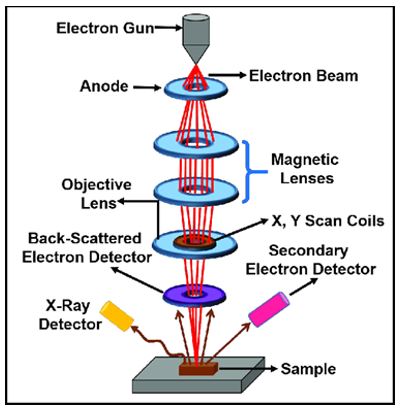Corrosion Mechanism and Mitigation in Batteries: A Review
DOI:
https://doi.org/10.5281/zenodo.15628982Keywords:
corrosion, charge-discharge cycles, capacity fading, corrosion monitoring, electrochemical degradationAbstract
Batteries are essential electrochemical components that drive contemporary technologies such as portable electronics, renewable energy sources, and electric cars. However, rust severely impairs battery longevity and performance by causing chemical and electrochemical degradation of electrodes, current collectors, and interfaces. Capacity fading, elevated internal resistance, and possible safety risks including thermal runaway are all consequences of corrosion. This paper examines the basic mechanisms underlying battery corrosion, classifying several forms such as thermal, electrolyte leakage-induced, galvanic corrosion and so on. Furthermore, a thorough analysis is conducted of the variables that affect corrosion, such as temperature, charge-discharge cycles, and electrolyte composition. Advanced diagnostic methods for corrosion monitoring and detection are covered, including X-ray diffraction (XRD), scanning electron microscopy (SEM), and electrochemical impedance spectroscopy (EIS). Additionally, new approaches to corrosion prevention are examined, such as solid-state electrolytes, improved coatings, and electrolyte additives. Additionally emphasized is the use of machine learning and artificial intelligence in conjunction for predictive maintenance and real-time monitoring. Research and development efforts must focus on addressing battery corrosion since it is essential to enhancing the sustainability, dependability, and efficiency of energy storage technologies.
Downloads
References
Vijayasekaran Boovaragavan, R. N. Methakar, Venkatsailanathan Ramadesigan, & V. R. Subramanian. (2009). A mathematical model of the lead-acid battery to address the effect of corrosion. Journal of The Electrochemical Society, 156(11), A854–A854. doi: 10.1149/1.3190510.
P. Xu, C. Wang, B. Zhao, Y. Zhou, & H. Cheng. (2021). An interfacial coating with high corrosion resistance based on halloysite nanotubes for anode protection of zinc-ion batteries. Journal of Colloid and Interface Science, 602. 859–867. doi: 10.1016/j.jcis.2021.06.057.
H. Tian, Y. Guo, & J. Qiao. (2025 Feb.). Silver-coated carbon cloth for dendrite suppression in lithium-ion batteries. Batteries, 11(2), 74.
T. Rahman, T. Alharbi, & M. S. H. Lipu. (2024). Exploring lithium-ion battery degradation: A concise review of critical factors, impacts, and data-driven estimation techniques. Batteries, 10(7), 220.
H. Zhang, X. Li, Y. Wang, & J. Chen. (2020). Aluminum corrosion in lithium-ion battery electrolytes: Mechanisms and mitigation strategies. Journal of Power Sources, 450, 227650.
R. K. Gupta, M. S. Islam, & P. Singh. (2021). Influence of electrolyte composition on aluminum current collector corrosion in lithium-ion batteries. Electrochimica Acta, 367, 137-146.
J. T. Verde, & K. J. Stevenson. (2022). Galvanic corrosion in lead-acid batteries and its implications for battery longevity. Electrochimica Acta, 320, 134871.
S. H. Lee, H. Y. Park, & D. W. Kim. (2023). Electrochemical interactions in hybrid battery systems: Galvanic corrosion effects. Energy Storage Materials, 45, 23-35.
L. M. Zhou, X. G. Yang, & C. Y. Wang. (2022). Graphene-based anti-corrosion coatings for lithium-ion batteries. Advanced Materials, 34(6), 2104532.
T. K. Hansen, P. R. Brown, & J. D. Evans. (2021). Electrochemical stability of nickel-coated copper current collectors in lithium-ion batteries. Journal of the Electrochemical Society, 168(12), 120511.
M. A. Rahman, N. K. Roy, & S. P. Biswas. (2023). Self-healing coatings for corrosion protection in energy storage devices. ACS Applied Materials & Interfaces, 15(10), 17823-17835.
Y. Zhang, L. Wang, & X. Liu. (2020). Corrosion mechanisms in lithium-ion batteries: Impact of electrolyte leakage on battery components. Electrochimica Acta, 330, 135256.
J. Kim, H. Lee, & S. Park. (2021). Decomposition of lithium hexafluorophosphate in humid environments and its effect on battery performance Journal of Power Sources, 456, 227899.
T. Brown, & M. Green. (2019). Electrochemical degradation in lead-acid batteries: Corrosion effects of sulfuric acid leakage. Battery Research Journal, 17(4), 315-327.
K. Nakamura, P. Singh, & R. Jones. (2022). Alkaline corrosion in nickel-metal hydride batteries due to electrolyte leakage. Journal of Electrochemical Science and Engineering, 12(2), 112-123.
M. Huang, C. Zhao, & X. Li. (2020). Environmental impact on battery electrolyte stability and leakage-induced corrosion. Energy Storage Materials, 28, 456-472.
H. J. Grabke, E. R. Macherauch, & B. Schütze. (1995). The mechanism of intergranular corrosion in stainless steels. Corrosion Science, 37(8), 1161–1182.
X. Zhou, H. Xu, Y. Liu, & K. Zhang. (2017). Intergranular corrosion of aluminum current collectors in lithium-ion batteries: A fluoride-induced degradation mechanism. Electrochimica Acta, 245, 632–641.
J. C. Farmer, & T. D. Burchell. (1996). Corrosion of lead and lead-based alloys in electrochemical applications. Journal of the Electrochemical Society, 143(2), 564–572.
G. H. Meier, & F. S. Pettit. (1983). Hydrogen embrittlement and intergranular corrosion in nickel-based alloys. Metallurgical Transactions A, 14(5), 1083–1093.
D. Lin, Y. Liu, & Y. Cui. (2017). Reviving lithium metal anodes for next-generation batteries. Nature Nanotechnology, 12(3), 194–206.
J. M. Tarascon, & M. Armand. (2001). Issues and challenges facing rechargeable lithium batteries. Nature, 414(6861), 359–367.
X. Ji, & L. F. Nazar. (2010). Advances in Li–S batteries. Journal of Materials Chemistry, 20(41), 9821–9826.
D. Pavlov. (2017). Lead-acid batteries: Science and technology. (2nd ed.). Amsterdam, Netherlands: Elsevier.
H. Bode. (1977). Lead-acid batteries. New York, USA: Wiley.
P. G. Bruce, S. A. Freunberger, L. J. Hardwick, & J. M. Tarascon. (2012). Li–O₂ and Li–S batteries with high energy storage. Nature Materials, 11(1), 19–29.
A. Manthiram, Y. Fu, S.-H. Chung, C. Zu, & Y.-S. Su. (2014). Rechargeable lithium–sulfur batteries. Chemical Reviews, 114(23), 11751–11787.
J. Kim, H. Lee, & J. Cho. (2020). A review of transition metal dissolution in Li-ion batteries: Solutions and future challenges. J. Mater. Chem. A, 8(12), 5760-5780.
X. Zhang, W. Shyy, & A. Marie Sastry. (2007). Numerical simulation of intercalation-induced stress in Li-ion battery electrode particles. J. Electrochem. Soc., 154(10), A910-A916.
M. Metzger, M. Badway, D. G. Lutz, & B. L. Lucht. (2016). Role of electrolyte decomposition in the performance of high-voltage lithium-ion batteries. Electrochem. Commun., 63, 18-21.
Y. Zhang, X. Zeng, & G. Liang. (2019). Aluminum corrosion in lithium-ion batteries: Mechanisms and mitigation strategies. J. Power Sources, 412, 37-49.
J. Garche, & A. Jossen. (2002). Battery behavior and properties as a function of temperature. J. Power Sources, 105(2), 200-211.
D. Pavlov. (2011). Lead-acid batteries: Science and technology. Elsevier.
S. Randau et al. (2020). Interfacial stability of lithium metal solid-state batteries: A review. ACS Energy Lett., 5(7), 2292-2304.
Y. Zhu, X. He, & Y. Mo. (2017). Origin of outstanding stability in the lithium solid electrolyte materials.” Chem. Mater., 29(21), 9478-9485.
J. Vetter, P. Novák, M. R. Wagner, C. Veit, K. C. Möller, J. Besenhard, M. Winter, M. Wohlfahrt-Mehrens, C. Vogler, & A. Hammouche. (2005). Ageing mechanisms in lithium-ion batteries. Journal of Power Sources, 147(1-2), 269–281.
P. Verma, P. Maire, & P. Novák. (2010). A review of the features and analyses of the solid electrolyte interphase in Li-ion batteries. Electrochimica Acta, 55(22), 6332–6341.
D. Pavlov. (2011). Lead-acid batteries: science and technology. Elsevier Science.
M. M. Thackeray, C. Wolverton, & E. D. Isaacs. (2012). Electrical energy storage for transportation—approaching the limits of, and going beyond, lithium-ion batteries. Energy & Environmental Science, 5(7), 7854–7863.
J. Nanda, L. Yang, J. T. Vaughey, & M. M. Thackeray. (2012). Cathode materials for lithium-ion batteries: an overview. Electrochemical Society Interface, 21(2), 35–42.
Y. Sun, N. Liu, & Y. Cui. (2016). Promises and challenges of nanomaterials for lithium-based rechargeable batteries. Nature Energy, 1(7), 16071.
P. W. Ruch, D. Cericola, R. Koenigshofer, & R. Kötz. (2010). Corrosion effects in battery electrolytes. Electrochimica Acta, 55(22), 6332–6341.
K. Xu. (2014). Electrolytes and interphases in Li-ion batteries and beyond. Chemical Reviews, 114(23), 11503–11618.
Y. Zhao, L. L. Liu, X. S. Zhou, & L. F. Li. (2020). Dendrite growth in lithium metal batteries. Nature Reviews Materials, 5(3), 229–242.
O. Verners, G. Psofogiannakis, & A. C. T. van Duin. Comparative molecular dynamics study of fcc-Al hydrogen embrittlement. Unpublished.
R. Perriment, V. Kumtepeli, M. D. McCulloch, & D. A. Howey. Lead-acid battery lifetime extension in solar home systems under different operating conditions. Unpublished.
T. Rahman, & T. Alharbi. Exploring lithium-ion battery degradation: A concise review of critical factors, impacts, data-driven degradation estimation techniques, and sustainable directions for energy storage systems. Unpublished.
V. S. Sajj. Corrosion and materials degradation in electrochemical energy storage and conversion devices. Unpublished.
Y. Zhong, B. Liu, Z. Zhao, Y. Shen, X. Liu, & C. Zhong. Influencing factors of performance degradation of zinc–air batteries exposed to air. Unpublished.
B. Lu, W. Li, D. Cheng, M. Ceja, W. Bao, C. Fang, & Y. S. Meng. Suppressing chemical corrosions of lithium metal anodes. Unpublished.
S. Liu. (2023). Wi-Fi energy detection Testbed (12MTC). GitHub Repository. Available at: https://github.com/liustone99/Wi-Fi-Energy-Detection-Testbed-12MTC.
Treatment episode data set: discharges (TEDS-D): concatenated, 2006 to 2009. doi:10.3886/ICPSR30122.v2
J. Wang et al. (2021). Corrosion in battery systems: Mechanisms and prevention strategies. Electrochimica Acta, 387, 136050.
Y. Chen et al. (2022). High-entropy alloys for battery applications: Corrosion resistance and electrochemical performance. Materials Today, 45, 23-34.
A. Gupta, & M. P. Balogh. (2023). Aluminum corrosion in lithium-ion batteries: Challenges and solutions, Journal of Power Sources, 520, 230412.
D. Zhang et al. (2021). Conductive polymer coatings for battery protection. Progress in Materials Science, 98, 275-310.
T. Shibata et al. (2023). Ceramic coatings for lithium-ion battery electrodes: A review. Electrochemical Society Transactions, 104(5), 45-58.
K. Liu, & Y. Zhao. (2023). Graphene-based coatings for battery applications: Corrosion resistance and conductivity. Carbon, 198, 112307.
P. Novak et al. (2022). Electrolyte decomposition and its effect on lithium-ion battery performance. Journal of the Electrochemical Society, 170, 123510.
R. McMillan et al. (2022). Lithium salt alternatives for improved electrolyte stability. Energy Storage Materials, 36, 87-102.
M. Singh, & S. Patel. (2023). Aqueous electrolyte optimization for corrosion control in zinc-based batteries. Journal of Applied Electrochemistry, 54, 178-192.
H. Wu et al. (2023). SEI layer stability and its impact on battery lifespan. Advanced Energy Materials, 12, 2104325.
J. Kim et al. (2023). Phosphate-based inhibitors for lithium-ion batteries. Electrochimica Acta, 415, 140315.
L. Zhou et al. (2023). Ionic liquid electrolytes for advanced battery systems. Journal of Power Sources, 530, 231147.
C. Huang et al. (2022). Thermal management in lithium-ion batteries: Challenges and solutions. Applied Thermal Engineering, 195, 117052.
Y. Sun et al. (2022). Overcharge protection mechanisms in lithium-ion batteries. Journal of Electrochemical Energy Conversion, 22, 210301.
S. Ahmed et al. (2023). Real-time corrosion monitoring in battery management systems. Sensors and Actuators B: Chemical, 379, 133028.
Habib, U., Ahmad, F., Awais, M., Naz, N., Aslam, M., Urooj, M., ... & Shabbir, M. J. (2023). Sustainable catalysis: navigating challenges and embracing opportunities for a greener future. J. Chem. Environ, 2(2), 14-53.
Aydinsoy, E. A., Aghamaliyev, Z. Z., Aghamaliyeva, D. B., & Abbasov, V. B. (2024). A systematic review of corrosion inhibitors in marine environments: Insights from the last 5 years. Processes of Petrochemistry and Oil Refining, 25(3).
Komary, M., Komarizadehasl, S., Tošić, N., Segura, I., Lozano-Galant, J. A., & Turmo, J. (2023). Low-cost technologies used in corrosion monitoring. Sensors, 23(3), 1309.
Li, S., Kim, Y. G., Jung, S., Song, H. S., & Lee, S. M. (2007). Application of steel thin film electrical resistance sensor for in situ corrosion monitoring. Sensors and Actuators B: Chemical, 120(2), 368-377
Saminathan, R., Nashali, A. Y. A., Haqawi, A. A. A., Marappan, S., Natesan, S. P., & Shakeel, F. (2024). Role of artificial intelligence (AI) and machine learning (ML) in the corrosion monitoring processes. Zastita Materijala, 65(3), 473-480.

Published
How to Cite
Issue
Section
ARK
License
Copyright (c) 2025 Mahesh R, Yashvi Tripathi, Sneha P.M, Kusuma Sampada H, Bandi Vijaya Hetasvi

This work is licensed under a Creative Commons Attribution 4.0 International License.
Research Articles in 'Applied Science and Biotechnology Journal for Advanced Research' are Open Access articles published under the Creative Commons CC BY License Creative Commons Attribution 4.0 International License http://creativecommons.org/licenses/by/4.0/. This license allows you to share – copy and redistribute the material in any medium or format. Adapt – remix, transform, and build upon the material for any purpose, even commercially.










